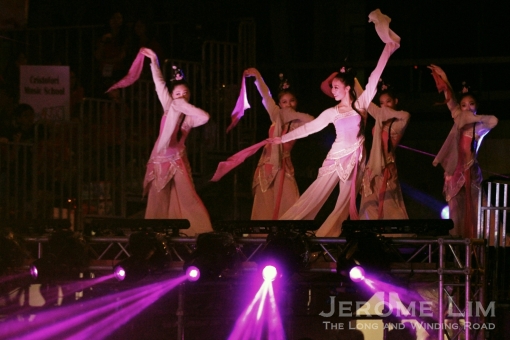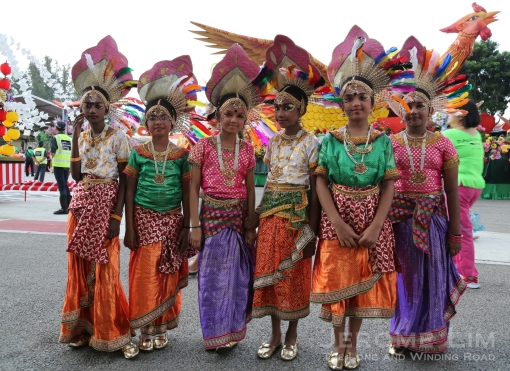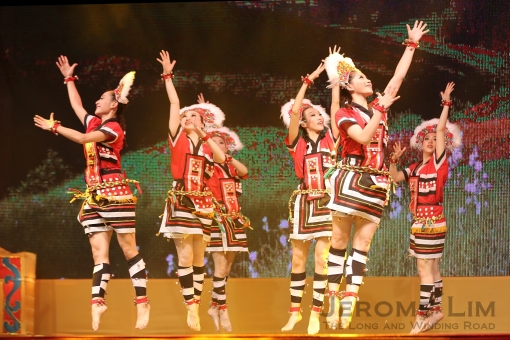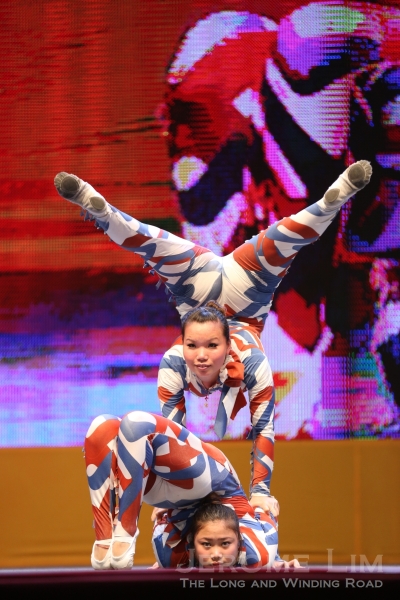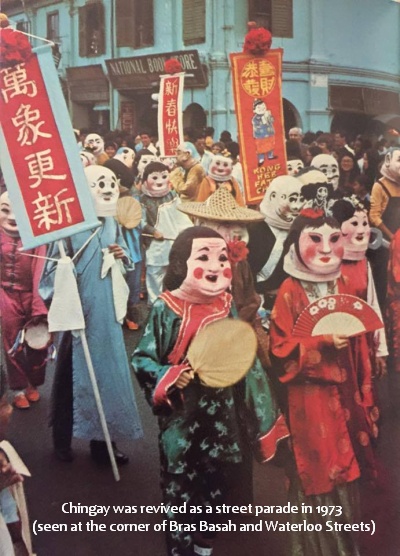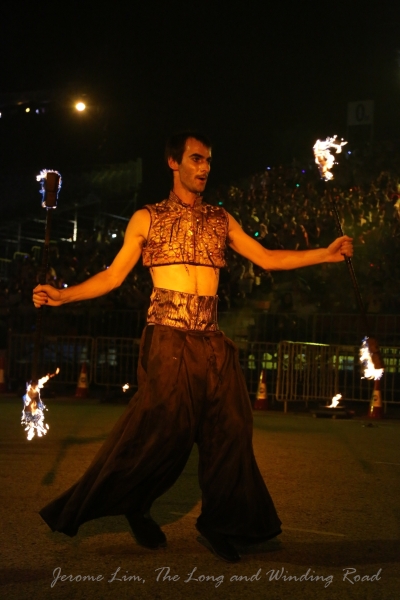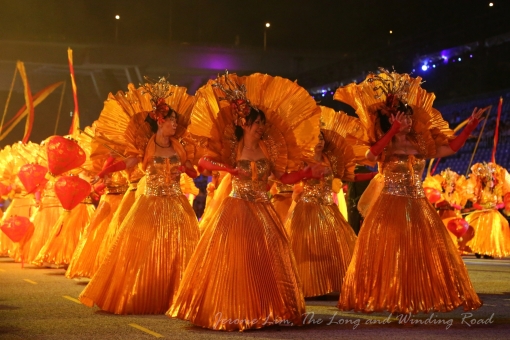Those who remember the very first Chingay in 1973 will remember it as a parade of lion dances, giant flag bearers, dragon dances, stilt walkers, clowns and juggling acts that took a 3 kilometre route from the old Victoria School to Outram Park. Those were the very first step of what has now become a continuing journey that is now into its 40th year. That first parade featured some 2000 performers that moved along from Tyrwhitt Road, passing Jalan Besar, Bencoolen Street, Bras Basah Road, North Bridge Road, South Bridge Road, Upper Cross Street, New Bridge Road and Outram Road, all of which had been lined with crowds that had gathered in anticipation. Introduced initially to make up for an imposition of a total ban on firecrackers, the parade which had been organised by the People’s Association and the Singapore National Pugilistic Federation, was such a success that it was made into an annual event. Over the years, the Chingay in Singapore has become a highly anticipated event on the calendar, and has evolved into the colourful night-time spectacle featuring participants from far and wide that we and audiences elsewhere look forward to.

Chingay celebrates its 40th year with the 2012 edition of the annual parade which will usher in the Year of the Dragon.

A scene from the opening segment in which the People's Association Youth Chinese Orchestra's Music Director & Conductor , Mr Ng Seng Hong performs on the erhu.
To mark the 40th edition of the Chingay, the organisers this year have lined up a treat that will certainly prove to be an unique and extraordinary experience – one that will be moved off dry land and into a specially created waterway at the F1 Pit Building. I had the privilege of being treated to a preview of this during Saturday’s full dress rehearsal which was preceded by a briefing to the media chaired by Mr Nah Juay Hng – the Chairman of the Chingay Parade Singapore 2012 Exco. Together with a panel that included Mr Kazuo Sugino of The Japanese Association, Singapore and Mr P Thirunal Karasu of Narpani, Mr Ng provided members of the media with an insight into this year’s parade which will see some 8000 participants splashing their way through a 360 metre waterway. Along with the participants, numerous floats will also make their way down the waterway through the parade’s 8 themed segments.

To mark the occasion of the 40th Chingay, the parade will take place in the glow of a show of light effects along a 360 metre waterway.

Participants moving along the 360 metre waterway.

Participants splashing their way through the waterway.

Participants representing NUS having a splashing good time.
Dubbed as “A Waterway Parade of Love and Care”, the parade will also see the active participation of the Indian community. Joining hands, both new citizens and long time Singaporeans from the community will present “Kaathal Doothu” – “Messengers of Love” with a 250 strong contingent. The parade will also feature performers from elsewhere, notably Japan, China and Indonesia, as well as local troupes and various community groups. The Japanese contingent will comprise 330 members and aims to spread a message of care and love with a 9.5 metre lantern structure that will be accompanied by the strains of the evergreen Japanese song “Ue O Muite Aruko” – more commonly known elsewhere as “Sukiyaki”. The Chinese contingent this year will include 300 young ladies – schoolgirls, as well as dancers from the Red Star Dance Troupe who will feature in a performance entitled “Ta Ge”.

This Chingay will also see the participation of the Indian community with a mix of both long time citizens and newly arrived ones.

A 9.5 metre high lantern will feature in the performance by the Japanese contingent.

300 young ladies from China's schools and its Red Star Dance Troupe will give a performance entitled “Ta Ge”.
The parade this year which ushers in the Chinese Year of the Dragon will also see an abundance of representations of the mythical creature. An opening all dragon segment will see an artistic dragon float, numerous dragons representations, as well as dragon dances form both Singapore and China. The penultimate segment will also see 28 community dragons representing various community grassroots groups in Singapore making an appearance before what will be a very grand finale which will see some 3000 performers and culminate with a rendition of “爱让你看到” or “Love Will Make You See” – the parade’s finale theme song by three popular lead singers, Yang Hai Tao, Joi Chua and Vera.

Ushering in the Year of the Dragon, Chingay will feature numerous dragons.

Fire, water and swirling dragons - Chingay has come a long way since its inception in 1973.

A fire breathing dragon makes an appearance.

The grand finale will see some 3000 performers along the waterway.
On the evidence of the what we were treated to during the full dress rehearsal complete with the well-choreographed lighting effects and dragons swirling to the glow of orange from burst of flames, the parade is one that will be nothing short of spectacular, and definitely one that will be hard to forget. This year’s unique parade on water is also one that is not to be missed and one that I would look forward to with the same anticipation as I did as as that child of eight that I was to that very first Chingay close to four decades ago.

The opening segment will see "Brides of the World" strutting down a catwalk on the waterway.
Faces from the Full Dress Rehearsal













How to catch Chingay 2012
Tickets for the event which will take place on 2 days – 3 and 4 February 2012, are, as of the day of the media briefing, 80% sold for what is expected to be a sold out event. Information can be found at the Chingay 2012 website (click here). Those unable to obtain tickets are able to catch the parade at a non-waterway section of the 800 metre parade route at free standing areas at the Marina Promenade behind the Singapore Flyer.
The event will also be broadcast live over the two days and see international coverage with stations from Japan, China and Taiwan broadcasting to audiences in their respective countries, as well as see it being beamed live through Chinese internet TV network PPTV which is target at audiences in China, as well as those worldwide – making a live streaming of the event available to a variety of internet enable devices. To catch a live webcast of it, please visit the Chingay 2012 website (click here).








